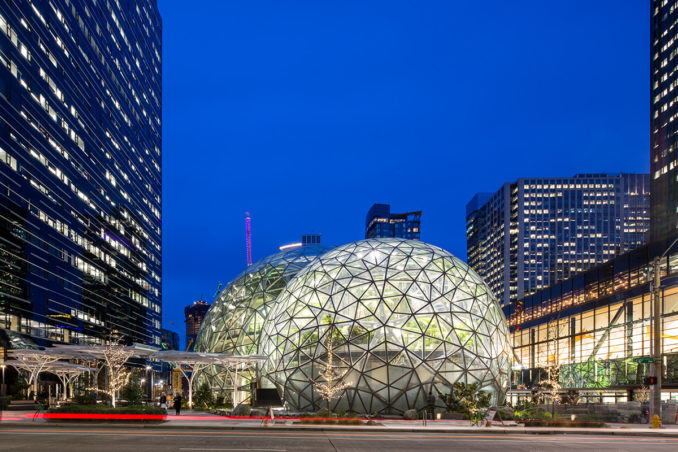
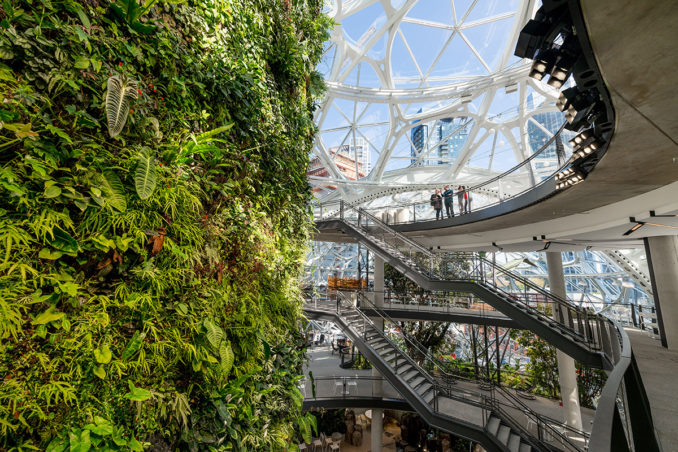
The immersive, nature-rich environment of The Spheres offers an innovative workplace typology that restores the mind and stretches the limits of biophilic design. At the same time, The Spheres is a proper botanical conservatory, home to more than 40,000 plants across 700 species and emphasizing the conservation of plants from the world’s tropical cloud forests. Intensive planting displays include trees reaching over 50 feet alongside orchids that can fit on a fingertip. The interior landscape integrates numerous informal gathering areas within the four-story glass building, providing a variety of places to linger and connect with others, or breathe deeply, meditate and reflect.
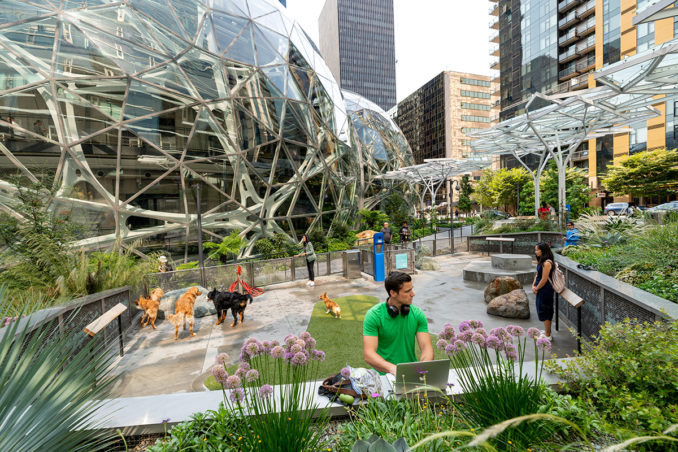

As a guiding principle, the design team studied Attention Restoration Theory to investigate what landscape qualities could offer the greatest benefits to health and wellbeing. The premise is that extended, focused attention of work-related activities can lead to mental fatigue and stress. In contrast, the restorative quality of natural environments can transport a person from their daily concerns and offer “soft fascinations” that capture attention in an effortless and involuntary way. By design, the landscape architecture encourages deep engagement with the natural world and stimulates innovative thinking that invites curiosity, relieves stress and sparks creativity.
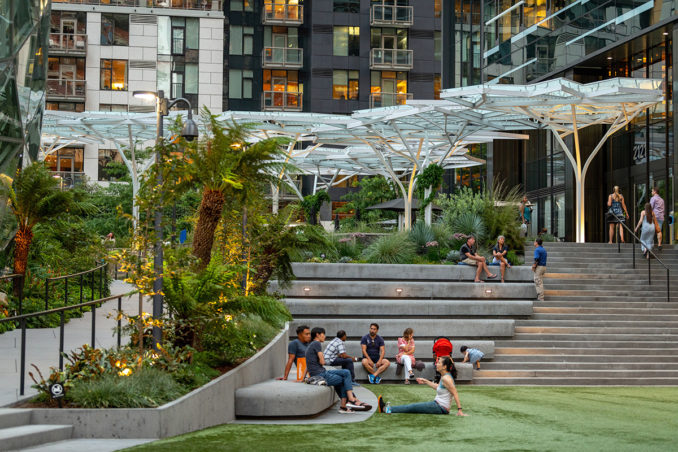
Step Inside
The building seamlessly encompasses the interior landscape to create a compelling visitor experience. Stairways, overlooks, paths, and a variety of gathering areas encourage visitors to explore the planting displays from multiple vantage points, expansive at some points and intimate at others.
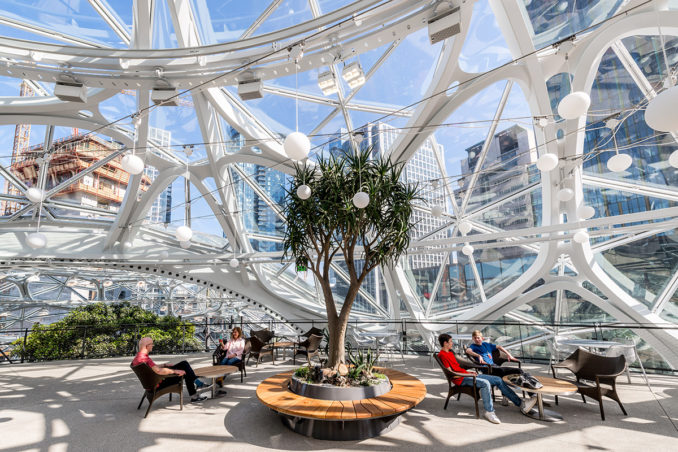
The planting displays offer an immersive, sensory experience, with an intellectual overlay addressing ethnobotany, conservation and botanical science. The north conservatory features a plant collection from Central and South America. A continuous 4′ soil depth accommodates six trees ranging from 26′ to 55′ tall, which visitors can explore up close from a level-3 canopy walk. More than 68 tons of natural stone is incorporated into the landscape, including stairs, planter walls and a stream that winds through the planter before appearing to cascade over a waterfall to a pool at the G-level entry below.
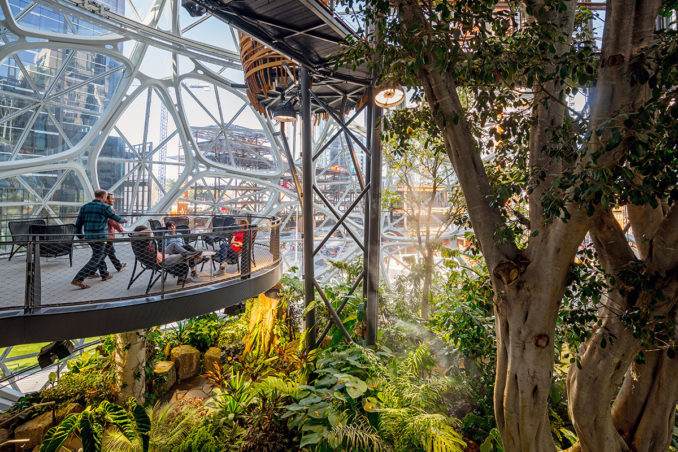
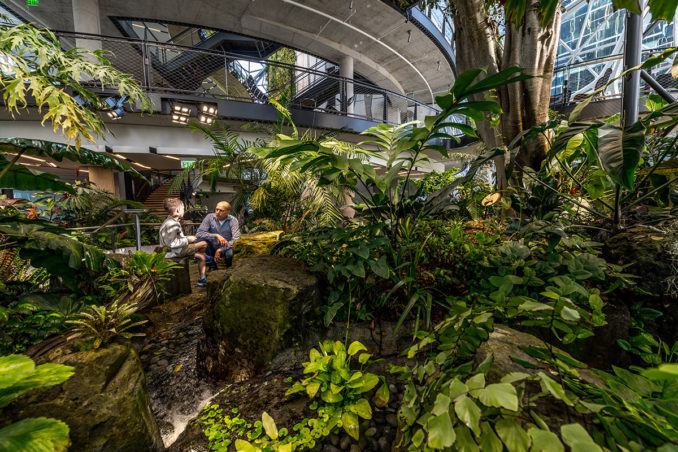
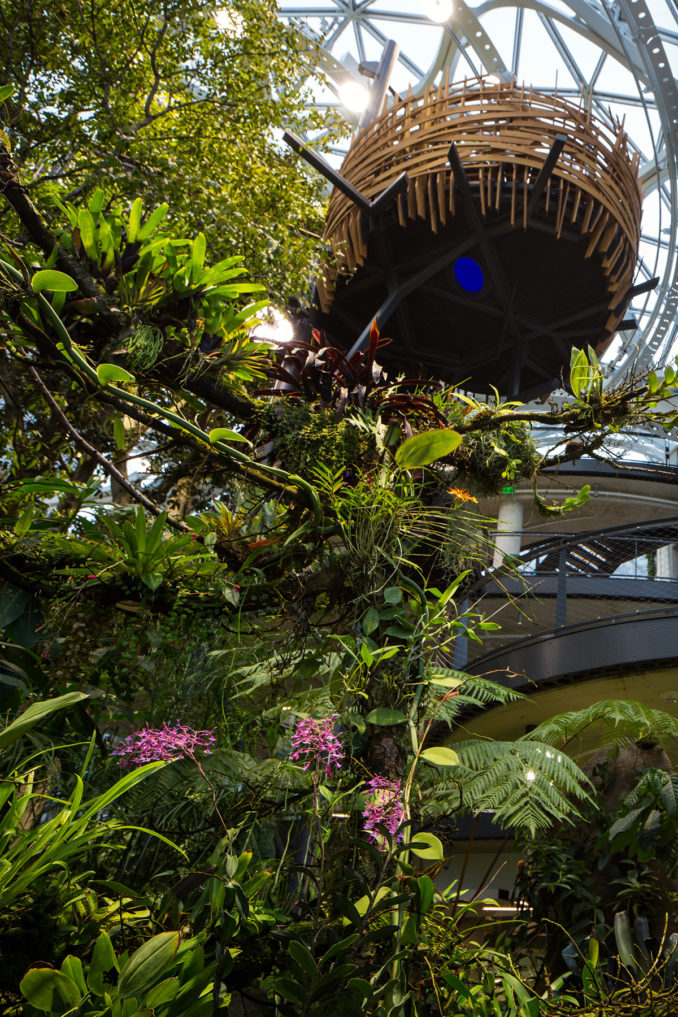
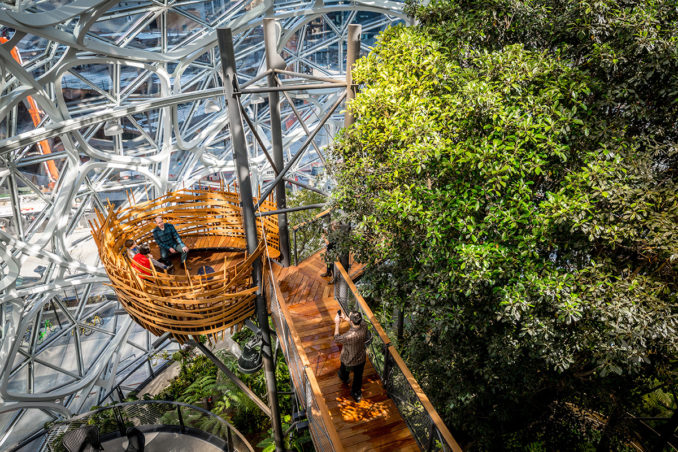
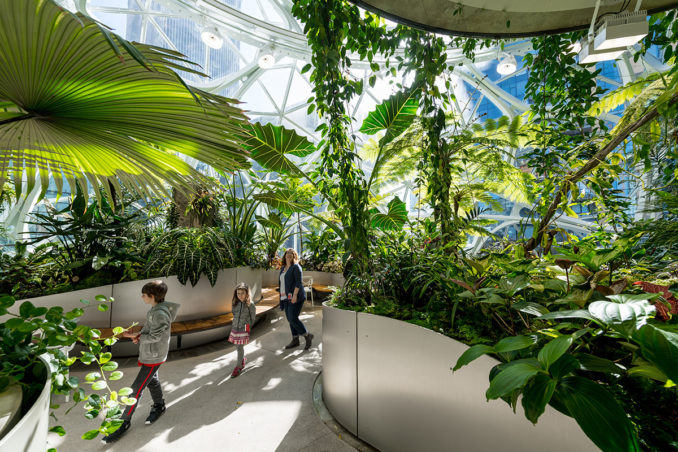
With a focus on plants from Asian cloud forests, the south conservatory features architectural raised planters clad in marine-grade aluminum. The raised beds invite close inspection and allow for more intimately scaled displays, while large specimens lend a sense of scale and enclosure to the seating areas below.
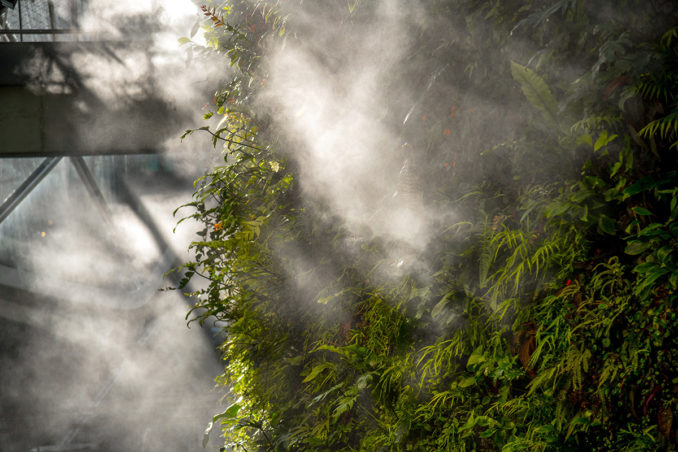
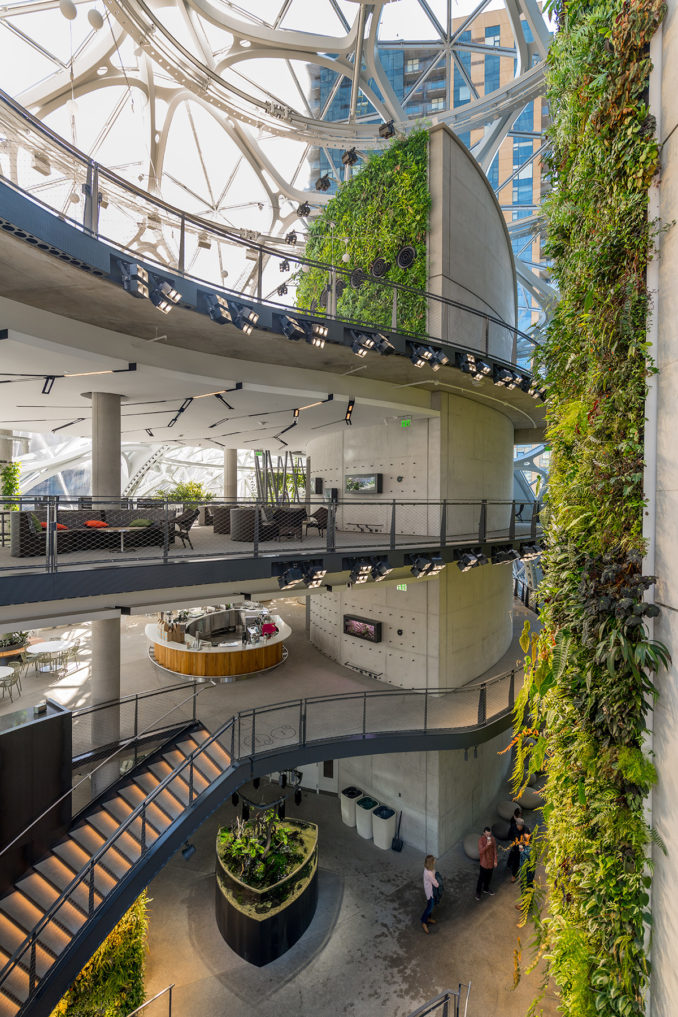
As a focal point throughout the building, the main core wall is clad in a 3200 SF living wall. With its naturalistic design, planting on the 67′-tall wall transitions from a minimal palette of ferns and low-light plants at the base, to an increasingly lush, diverse and colorful palette as it ascends above level 4.
Plant Procurement and Management
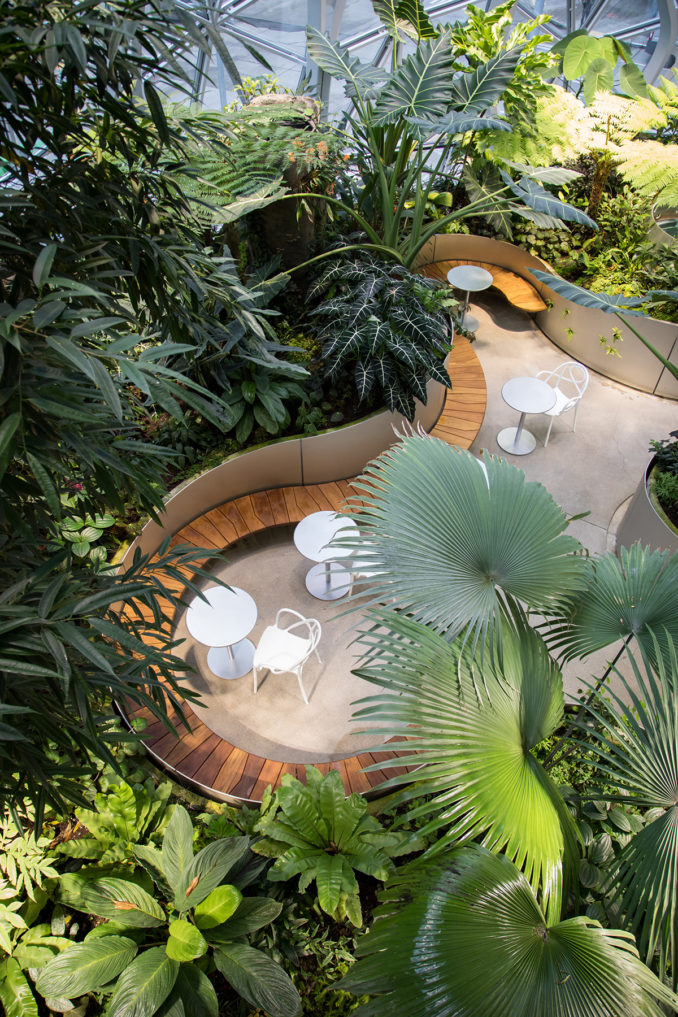
Development of the plant collection began more than three years prior to opening, drawing on commercial nurseries around the world, colleagues at other botanical institutions, private plant collectors, and large-tree nurseries in Florida and California. The collection was housed in an off-site greenhouse, which continues to serve as a back-of-house facility for The Spheres. The greenhouse was staffed by horticulturists with backgrounds in botanical institutions and conservation organizations, positioning them to be hired by the owner as long-term stewards of The Spheres’ landscape. Part of the core mission of the horticulture team is to propagate and share rare plants with other institutions, as part of an ex-situ conservation program.
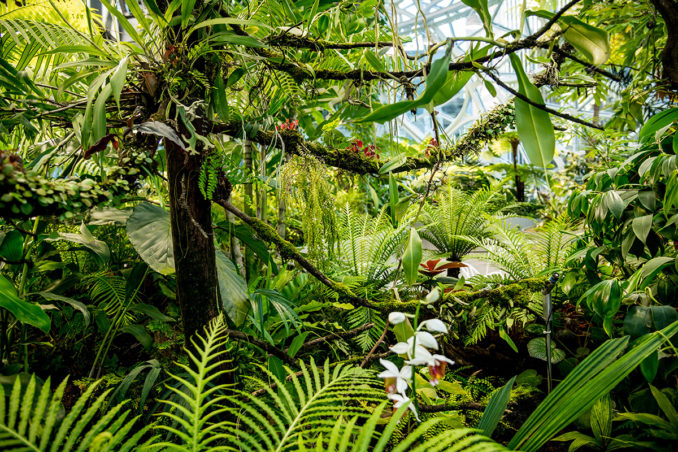
Conservation
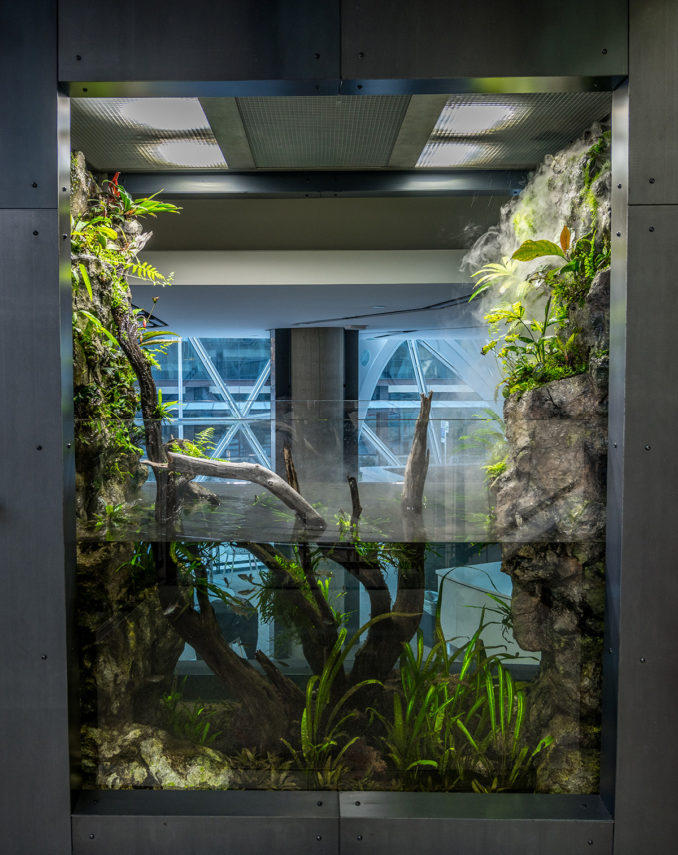
In the face of climate change and development pressures, tropical cloud forests are among the most threatened ecosystems in the world. With the Spheres open to the public on regular weekends, its ability to educate and inspire conservation is far-reaching. Displays feature an intellectual overlay addressing ethnobotany, conservation and botanical science, allowing visitors to learn something new with each visit. Through biophilia, the team developed an environment that is not only restorative for employees, but an educational tool and contributor to ex-situ conservation on a global scale.
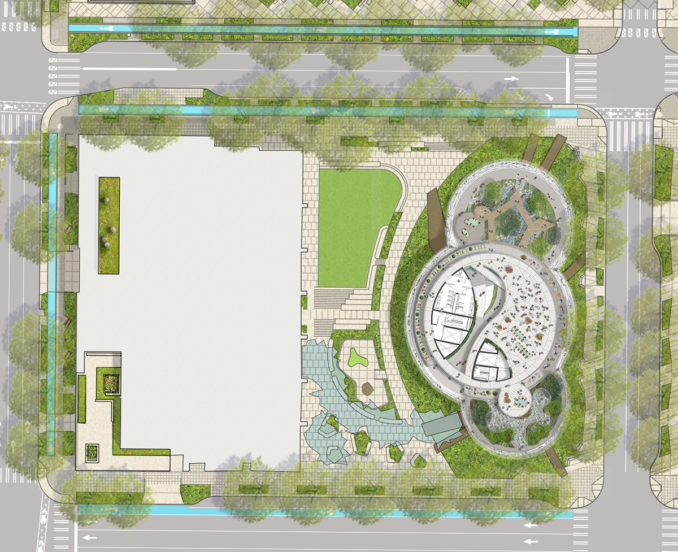
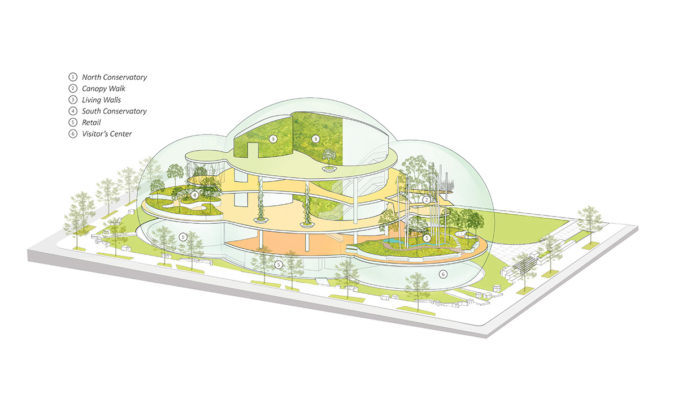
The Spheres
Project Credits
Landscape Architect | Site Workshop
Design Team
Mark Brands, ASLA
Jim Keller, ASLA
Matthew Wood
Pieter van Remoortre, ASLA
Jenn Low, ASLA
Fong Wu
Flora Yeh
Architect | NBBJ
Structural Engineer | Magnusson Klemencic Associates
Lighting & Mechanical Engineer | WSP
Photography Credits
As noted | Sean Airhart; Sean Airhart / NBBJ ; Stuart Isett ;
